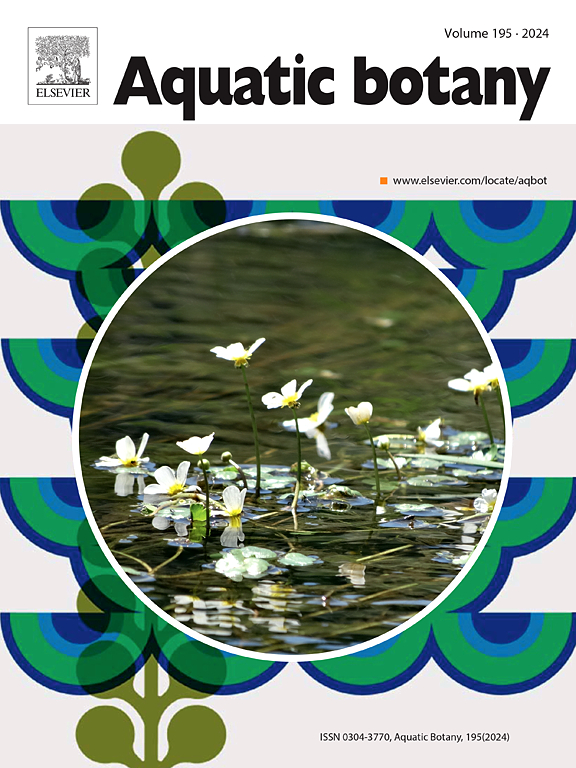Transcriptome analysis of the red marine alga Gracilaria vermiculophylla grown under different light intensities
IF 2.6
4区 生物学
Q2 MARINE & FRESHWATER BIOLOGY
引用次数: 0
Abstract
Light plays a vital role in seaweed growth by regulating photosynthesis and signaling metabolic processes. In natural habitats, seaweeds are exposed to fluctuating light conditions caused by environmental factors such as weather and tidal changes. Although the effects of light intensity on red algal growth have been studied physiologically, the underlying gene expression patterns remain poorly understood. Here, we examined the effect of light intensity on the growth of the economically important red alga Gracilaria vermiculophylla. Growth was markedly enhanced under high-light (HL) conditions compared with low-light (LL) conditions. To investigate the molecular basis of this enhanced growth, we performed transcriptome profiling using RNA-Seq. A total of 593 differentially expressed genes (DEGs) were identified between LL and HL. Among these, genes associated with nitrogen and carbon metabolism (e.g., nitrate reductase, ammonium transporter, and carbonic anhydrase) as well as β-glucanase, potentially involved in cell wall remodeling, were upregulated under HL. These findings provide new insights into the molecular mechanisms underlying light-enhanced growth in red macroalgae. The identified genes represent promising molecular targets for genetic engineering and may contribute to the development of strategies to enhance red algal productivity in aquaculture.
不同光强下生长的红海藻龙尾藻转录组分析
光通过调节光合作用和信号代谢过程在海藻生长中起着至关重要的作用。在自然生境中,海藻暴露在由天气和潮汐变化等环境因素引起的波动光照条件下。虽然光强度对红藻生长的影响已经从生理学上进行了研究,但潜在的基因表达模式仍然知之甚少。在这里,我们研究了光强对经济上重要的红藻紫菜生长的影响。与弱光(LL)相比,高光(HL)条件下的生长明显加快。为了研究这种增强生长的分子基础,我们使用RNA-Seq进行了转录组分析。在LL和HL之间共鉴定出593个差异表达基因(DEGs)。其中,与氮和碳代谢相关的基因(如硝酸盐还原酶、铵转运蛋白和碳酸酐酶)以及可能参与细胞壁重塑的β-葡聚糖酶在HL下上调。这些发现为红藻光增强生长的分子机制提供了新的见解。所鉴定的基因为基因工程提供了有希望的分子靶点,并可能有助于制定提高水产养殖中红藻产量的策略。
本文章由计算机程序翻译,如有差异,请以英文原文为准。
求助全文
约1分钟内获得全文
求助全文
来源期刊

Aquatic Botany
生物-海洋与淡水生物学
CiteScore
3.80
自引率
5.60%
发文量
70
审稿时长
6 months
期刊介绍:
Aquatic Botany offers a platform for papers relevant to a broad international readership on fundamental and applied aspects of marine and freshwater macroscopic plants in a context of ecology or environmental biology. This includes molecular, biochemical and physiological aspects of macroscopic aquatic plants as well as the classification, structure, function, dynamics and ecological interactions in plant-dominated aquatic communities and ecosystems. It is an outlet for papers dealing with research on the consequences of disturbance and stressors (e.g. environmental fluctuations and climate change, pollution, grazing and pathogens), use and management of aquatic plants (plant production and decomposition, commercial harvest, plant control) and the conservation of aquatic plant communities (breeding, transplantation and restoration). Specialized publications on certain rare taxa or papers on aquatic macroscopic plants from under-represented regions in the world can also find their place, subject to editor evaluation. Studies on fungi or microalgae will remain outside the scope of Aquatic Botany.
 求助内容:
求助内容: 应助结果提醒方式:
应助结果提醒方式:


